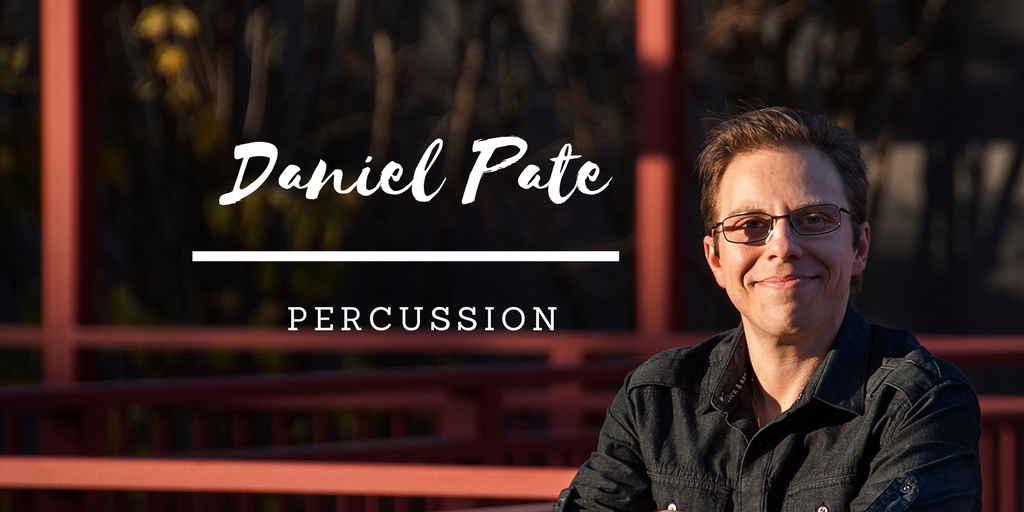"Vox Sum Vitae" For Vibraphone and Electronics
Aside from my musings on artistry and music, I want to share information about works that I believe are or will be important to the future of our instrument. One of these is for Vibraphone and Electronics entitled "Vox Sum Vitae" by Joao Pedro Oliveira.
Program Notes: (By Joao Pedro Oliveira)
“Vox Sum Vitae (I am the voice of life) is an inscription in a church bell in Strasbourg.
In one of my trips to Germany, on a Sunday morning I was woke suddenly with the sound of hundreds of church bells, announcing the early morning church service.
This piece is a representation of that sound image.
It intends to lead the listener in a trip where bell sounds are around him (emphasized by the distribution of the loudspeakers in the room and the spatialization of the electronic sounds). The instrumental gestures and produced sounds are melted in the electronics, leading to the illusion that the vibraphone transforms itself in a carillon of infinite bells.”
Excerpt: By Joao Pedro Oliveira Performed by Daniel Pate @ The 2017 New World Electro-Acoustic Music Organization National Festival
Image via professional website of composer. here
JOÃO PEDRO OLIVEIRA (1959) is a prominent Portuguese composer who’s works frequently feature electro-acoustic elements in order to expand the sonic elements that exist in the acoustic setting. He is a former Fulbright scholar, Alumni of Stony Brook University where he earned a Phd in Composition and currently serves as a Professor at Federal University of Minas Gerais (Brazil) and Aveiro University (Portugal). In discussing the context that he believes his works exist, he states that, “My work will not break with the past or confront it... It only tries to communicate something very personal that may not even be communicable.” (Oliveira)
“Vox Sum Vitae” for vibraphone and electronics is an excellent representation of his belief of personal communication through the blend of the electronic and acoustic elements. The piece is constructed using several different motivic tools of pitch organization, rhythm organization, and dynamics which Oliveira uses to progress through the work. The most striking element is the extremities in range for many gestures. “Vox Sum Vitae” begins with the two most separated notes on the instrument, (F2 F5) and begins to slowly move inward by whole step motion until finally reaching the B natural that bisects the instrument. This slow progression inward is broken by several short moving gestures that are used as in order to add tension or motion to the music. (Oliveira, 2017)
Ex.1 examples of motives used in “Vox Sum Vitae” (measure 1 and measure 37)
The electronic element in this work supports the vibraphone, expanding sound beyond physical limitations. Oliveira frequently uses sweeping gestures and fluctuating dynamics within the electronics, as well as extended drones, to create a fluidity of sound and connect elements harmonically back to the stepwise motion inward which is the main organizational concept of the work.
Oliveira specifies mallet choices for both hard and medium hard vibraphone mallets which must be rhythmically clear at several dynamic levels. This is not unusual, but his choice to use knitting needles is quite interesting. Because the piece simulates the sounds of bells, the loudest parts occur at the beginning and ending of the stepwise motion which occurs at m. 105 with the F naturals spread throughout the instrument. The following music is a return of selected motives which occur throughout the work and are meant to be reflections or echoes of these sounds. The use of knitting needles in this particular section allows the performer to show the motifs without the fear of performing too loudly or missing notes.
Though Oliveira states that he did not collaborate with any particular percussionist on this work, he has engaged with percussionists in previous instances and gained considerable knowledge and understanding about the challenges that are faced by performers. The direct collaboration with a percussionist occurred on his solo for marimba and electronics, Liquid Bars with percussionist Pedro Carneiro. Carneiro has spoken at length regarding his work with Oliveira and had this to say regarding the changes he made in his learning process in order to perform his works.
"The process of both learning and performing “Liquid Bars” is similar to what a dancer would call performing “a l’écoute.” Rather than synchronizing to actual counts and/or beats, dancers often “listen” to each other’s bodies, in a process in which one must memorize and that cannot be put into beats, measures, or other rigid metric solutions."(Carneiro, 2008)



